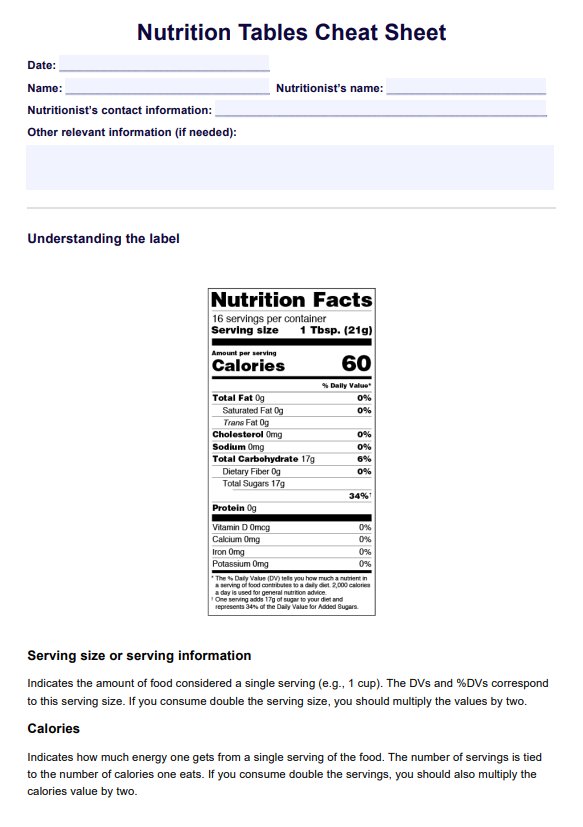A nutrient table, also known as a nutrition facts label, provides detailed information about the nutritional content of a food product, helping consumers make informed dietary choices.

Nutrition Tables Cheat Sheet
Unlock the secrets of nutrition labels with our Nutrition Tables Cheat Sheet, designed for health professionals and patients to make informed dietary choices.
Nutrition Tables Cheat Sheet Template
Commonly asked questions
The seven vital nutrients are carbohydrates (energy), proteins (tissue repair and growth), fats (energy and cell function), vitamins (various bodily functions), essential minerals (bone health and enzyme function), fiber (digestive health), and water (hydration and bodily functions).
The nutrition label has been updated to include added sugars, updated serving sizes, and a larger font for calories to reflect new scientific information and make it easier for consumers to understand.
EHR and practice management software
Get started for free
*No credit card required
Free
$0/usd
Unlimited clients
Telehealth
1GB of storage
Client portal text
Automated billing and online payments











